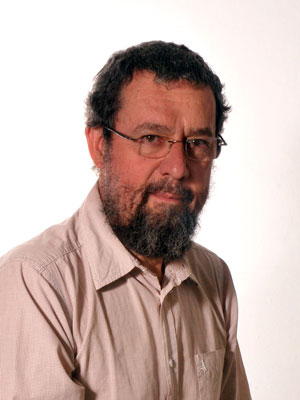2010 Science Week: food today, food tomorrow
CIMMYT-El Batán bustled with activity as nearly 130 scientists stationed in 19 different countries gathered for Science Week 2010. During 20-26 January, participating staff analyzed CIMMYT as an institution, identified program specific issues, and created action plans to improve the efficiency and imapct of the center’s work.
This year’s event featured forward-looking, cross-program discussions and the free exchange of ideas and information, allowing staff to learn more about other areas within CIMMYT. Much emphasis was placed on improving and increasing multi-disciplinary projects, including expanded roles for the Global Conservation Agriculture Program (CAP) and the Socioeconomics Program (SEP).
“I know my own program—the Global Maize Program—very well. But at Science Week you get a lot of perspectives on why and what CIMMYT is doing with wheat, conservation agriculture, and socioeconomics,” said Yoseph Beyene, a maize breeder based in Kenya. “The interaction between groups and the potential for collaboration is very interesting.”
Many staff members remarked on the positive and progressive vibe of the event. “This is the best Science Week in my nine years attending,” said Guillermo Ortíz-Ferrara, Nepal-based cereal breeder. The sentiment was endorsed by socioeconomist Mulugetta Mekuria, who is based in Zimbabwe: “The new scientists are revitalizing CIMMYT, making us more dynamic, and the director general is actively involved, giving a face to management.”
The week began with a general overview of each program, followed by a day of break-out sessions that focused on issues like science and publications, germplasm and platforms, and partnerships activities and impacts. On Friday, leaders delivered presentations on the CGIAR reform process, intellectual property rights, fundraising, the library, and CIMMYT’s website. Over the weekend, nearly 100 persons traveled to the Tlaltizapán Research Station to view drought trials, wheat trials, and to gain a better understanding of CIMMYT’s Mexico-based research stations. The final two days focused on program specific discussions, with an emphasis on program collaboration.
“The cross-program interaction this week was very rich,” said Marianne Bänziger, deputy director general for Research and Partnerships. “It is all of us together that will make a difference.” Director of CAP, Pat Wall, agreed by saying that the cross-program discussions were the highlight of the event.
One of the main goals of the week was to find ways to improve CIMMYT’s science. However, DG Tom Lumpkin reinforced that though quality science is vital for the center, it is a means to an end. “We are not just here to study; we are here to deliver impact,” he said. “Our mission is to serve the poor and the hungry.”
To continue to meet this mission, Lumpkin laid out three initiatives to prepare CIMMYT for the world of 2050. They include a consortium to raise wheat yield potential; the new Seeds of Discovery project; and the proposed Borlaug Institute for South Asia.
“The problems are out there,” Bänziger said. “But so are the solutions.”
 Etienne Duveiller is the new associate director of the Global Wheat Program (GWP) as of 01 January 2010. His previous position was GWP principal scientist and head of wheat pathology, to which he will continue to devote 25% of his time. Duveiller has spent more than 25 years in international agriculture, most of which have been with CIMMYT, and specializes in disease resistance, epidemiology, and integrated crop management. He understands national programs and regional offices, as he has been based in Africa, Latin America, and South Asia. Congratulations, Etienne!
Etienne Duveiller is the new associate director of the Global Wheat Program (GWP) as of 01 January 2010. His previous position was GWP principal scientist and head of wheat pathology, to which he will continue to devote 25% of his time. Duveiller has spent more than 25 years in international agriculture, most of which have been with CIMMYT, and specializes in disease resistance, epidemiology, and integrated crop management. He understands national programs and regional offices, as he has been based in Africa, Latin America, and South Asia. Congratulations, Etienne! The CIMMYT community and friends across the globe mourn the loss of great maize breeder Hugo Salvador Córdova Orellana who died on 25 December 2009. Hugo spent 32 years with the center striving, and often times succeeding, to increase global food security.
The CIMMYT community and friends across the globe mourn the loss of great maize breeder Hugo Salvador Córdova Orellana who died on 25 December 2009. Hugo spent 32 years with the center striving, and often times succeeding, to increase global food security.